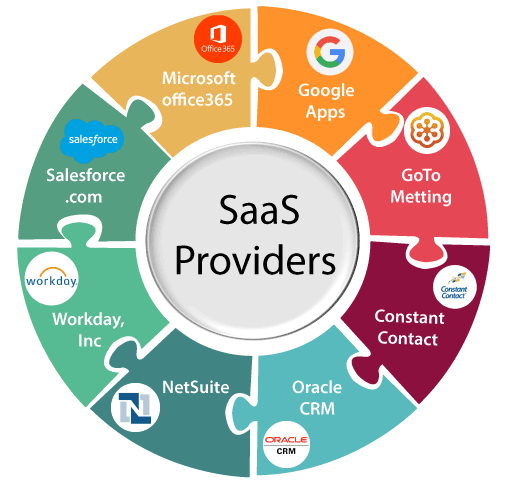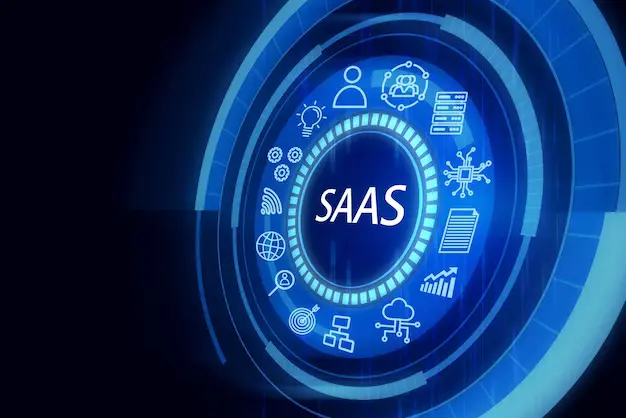
Hey tech enthusiasts, gather ’round because we’re diving deep into the tech arena to explore the epic clash between two heavyweight contenders: the flashy Software as a Service (SaaS) platforms and the classic, tried-and-true traditional software applications. It’s a battle of accessibility, ownership swagger, and customization finesse. Buckle up; this one’s gonna be a wild ride through the binary jungle! What Distinguishes a SAAS Platform from Regular Software Applications.
Table of Contents
What Distinguishes a SAAS Platform from Regular Software Applications?

1. Delivery and Access: SaaS – The Jetsetter’s Choice
Picture this: you’re chilling on your favorite beach, sipping a cold one, and suddenly, inspiration strikes. With SaaS, you’re not reaching for your laptop; you’re firing up your browser and accessing your tools from any device with a Wi-Fi pulse. Traditional software? Sorry, you’re stuck waiting to get back to your desk. What Distinguishes a SAAS Platform from Regular Software Applications.
2. Ownership and Licensing: SaaS – It’s a Subscription Soirée
Say goodbye to the days of software ownership dramas. With SaaS, you’re in a subscription dance, paying for the VIP access. Traditional software users might feel like they own the club, but SaaS subscribers are dancing like no one’s watching, no strings attached.
3. Infrastructure and Maintenance: SaaS – The No-Maintenance Maverick
Tech headaches? Not on SaaS’s watch. Your software playground is hosted by the cool kids, so no worries about updates, installations, or server dramas. Meanwhile, traditional software users are juggling their own IT circus – the real masters of their tech domain.
4. Scalability: SaaS – Flexibility on Steroids
What Distinguishes a SAAS Platform from Regular Software Applications .In a world where flexibility is key, SaaS platforms shine. Need to scale up? Down? Sideways? SaaS adjusts with a flick of a switch. Traditional software? Brace yourself for the scalability labyrinth; it’s a maze of licenses and installations.
5. Customization: SaaS – The Trendy Outfit You Can’t Alter
SaaS, while rocking the latest trends, might not let you customize every pixel. Traditional software is the bespoke suit of the tech world, tailored to fit your every eccentricity.
6. Cost Structure: SaaS – The Predictable VIP Pass
SaaS is throwing a subscription party, and you know exactly how much you’re paying to stay on the guest list. Traditional software? It’s the upfront cost ball – buy your ticket, but prepare for some hidden after-party expenses.
7. Updates and Upgrades: SaaS – The Auto-Magician
Updates shouldn’t be a chore. SaaS platforms auto-magically upgrade you to the latest and greatest. Traditional software? It’s a manual download extravaganza – welcome to the update buffet.
8. Collaboration and Integration: SaaS – The Social Butterfly
SaaS platforms are like the social media influencers of the software world – born to collaborate and integrate seamlessly. Traditional software might need a social skills upgrade for that level of connectivity.

In the ring of SaaS vs. traditional software, it’s all about the user’s vibe. SaaS offers the freedom to roam, scalability on demand, and a maintenance-free existence. Traditional software caters to the customization connoisseur, offering a tangible ownership experience. Choose your champion wisely, tech warriors, for the battle lines are drawn, and the future of your digital kingdom hangs in the balance!
Join Us on This Tech Journey:
As we navigate the tech landscape together, We invite you to be part of this exciting journey. From performance to design, your preferences are at the core of our recommendations. Also read our last mobile review of Poco X6 Pro 5G.
FAQ
What is the difference between a platform and SaaS?
Difference between a Platform and SaaS:
A platform is a broader term encompassing a range of services, tools, and infrastructure that allows developers to create applications. SaaS (Software as a Service), on the other hand, refers specifically to a cloud-based software delivery model where applications are provided over the internet, usually on a subscription basis. While a platform may include SaaS offerings, a platform is more comprehensive, offering a development environment and various services beyond software applications. What Distinguishes a SAAS Platform from Regular Software Applications.
What are three advantages for a company to use SaaS over a normal software application?
Advantages of SaaS over Traditional Software:
Cost Efficiency: SaaS eliminates upfront costs associated with traditional software, offering a subscription model that includes updates, maintenance, and support. This predictable pricing structure allows companies to allocate resources more efficiently.
Accessibility and Collaboration: SaaS applications are accessible from any device with an internet connection, fostering collaboration among geographically dispersed teams. This accessibility enhances flexibility, enabling employees to work seamlessly from various locations and devices.
Automatic Updates and Scalability: SaaS providers handle updates automatically, ensuring users always have access to the latest features and security patches. Scalability is simplified, allowing companies to adjust resources and features based on changing needs without complex installations or additional costs.
What are some benefits of the SaaS version over the non SaaS version?
Benefits of SaaS over Non-SaaS Versions:
What Distinguishes a SAAS Platform from Regular Software Applications.
Ease of Implementation: SaaS versions are typically quicker and easier to implement compared to traditional software. Users can start using the software almost immediately without the need for extensive installations or complex configurations.
Reduced Maintenance Burden: SaaS relieves companies of the burden of maintaining and updating software. The responsibility for infrastructure, updates, and support lies with the SaaS provider, freeing up internal resources for core business activities.
Improved Collaboration and Integration: SaaS solutions often prioritize seamless integration with other cloud services, promoting enhanced collaboration among different tools. This interconnectedness leads to a more streamlined workflow and a cohesive digital ecosystem.